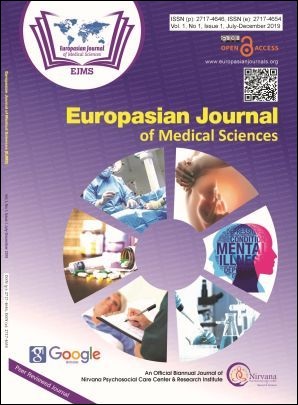Prevalence and Associated Factors of Neonatal Hypothermia within Six Hours of Birth among Newborns in Pokhara
Keywords:
Neonate hypothermia, Prevalence, Factors, Birth Asphyxia, Neonates, BirthAbstract
Background: Hypothermia is an important cause of neonatal morbidity and mortality. Persistent hypothermia leads to cold injury that results edema, scleroderma, pulmonary hemorrhage, jaundice and death. The objective of this study was to identify the prevalence and associated factors of neonatal hypothermia among newborns within six hours of Birth in Pokhara.
Methods: The institutional based quantitative descriptive cross sectional study was done among 402 systematic randomly selected respondents by using structured format and digital thermometer MT 100 after taking ethical approval from Nepal Health Research Council and Pokhara Academy of Health Sciences. Data was analyzed by using SPSS version 20. Multivariate logistic regression analysis was done for the variables (p<0.25) in bivariate analysis. The variables (p< 0.05) with Adjusted Odds ratio (AOR) at 95% CI in the multivariate logistic regression was considered as independent associated variables.
Results: The prevalence of neonatal hypothermia in the study area was about 43 percent. The significant independent factors of neonatal hypothermia were maternal age after 35 years (p=0.03, AOR: 4.087, 95% CI: 1.12-14.97), inadequate antenatal care (p=0.03, AOR: 0.52, 95% CI: 0.29-0.94), low birth weight (p=0.00, AOR: 0.433, 95% CI: 0.24- 0.77) and resuscitated babies at birth (p =0.00, AOR: 3.808)95% CI: 1.69- 4.65).
Conclusion: Out of 10 births, four babies were hypothermic in study site. Mother’s age more than 35 years, inadequate antenatal care, low birth weight and resuscitation at birth were associated factors of Neonatal hypothermia. So, special care is necessary for low birth weight babies and during resuscitation.
Downloads
Downloads
Published
How to Cite
Issue
Section
License
The author(s) retain the ownership of the copyrights for their work published in EJMS without any restrictions. Upon submission, the author(s) grants EJMS a license to publish, including to display, store, copy, and reuse the published content.
License to Publish
By submitting a manuscript to EJMS, the author(s) grant the journal a non-exclusive license to:
- Publish and distribute the content in all formats, media, and platforms (both existing and future), while identifying EJMS as the original publisher.
- Reproduce, display, and store the content in both print and online formats, including institutional and digital repositories.
- Translate, adapt, and summarize the work, including reprints, extracts, and abstracts.
- Develop derivative works based on the original content.
- Include the work in electronic databases and provide links to third-party materials.
Creative Commons Licensing
In addition to EJMS’s publishing rights, authors grant third parties the right to use, share, and distribute their work under the Creative Commons Attribution 4.0 (CC BY 4.0) International License. This allows unrestricted use of the content, provided proper attribution is given to the original author(s) and the journal.

